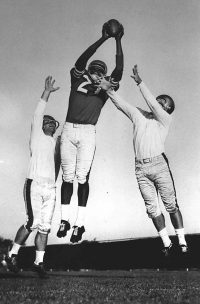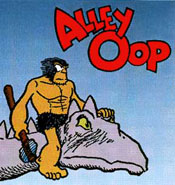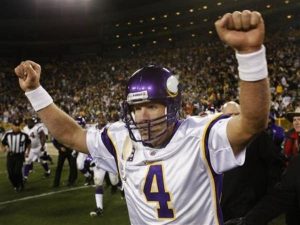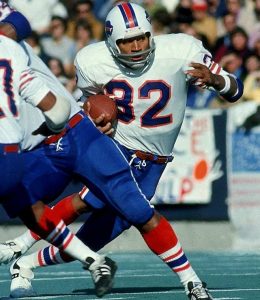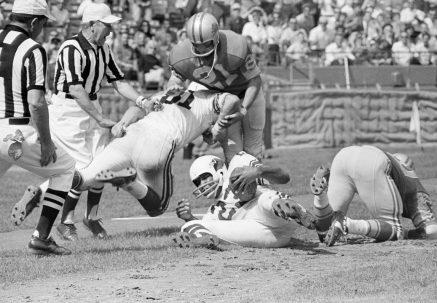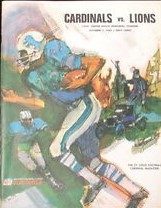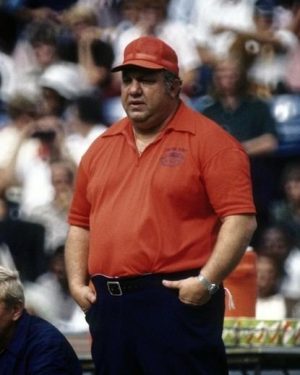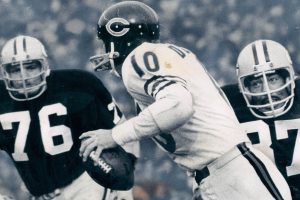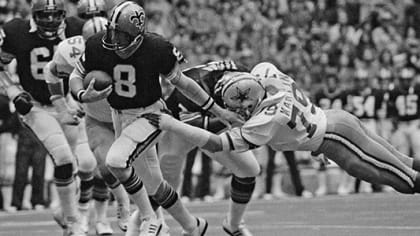The fourth and final section of our annual Bills’ season review is always my favorite part. I put on my imaginary GM hat and project the moves the team needs to make in order to continue climbing the ladder towards winning a Lombardi Trophy. Even though Buffalo’s roster is a lot more complete than it was a few years ago, the list of positions that need to be addressed is longer than usual. So let’s get right to it in suggesting the team’s off-season changes.
Quarterback
Again this year, this should contain an asterisk. It’s only backup quarterback that needs to be addressed. GM Brandon Beane made 2 interesting comments at his postseason press conference regarding the quarterbacks:
- He expects Mitch Trubisky to pursue a starting job
- He says Davis Webb is like a player/coach in the QB room
So Webb is likely to return as at least the practice squad QB. The Bills can look in 2 directions for a replacement for Trubisky. They can scour the free agent list for a veteran backup or spend a mid-to-late round draft pick on a player who projects as an NFL backup. The list of available veterans includes 3 names familiar to Bills’ fans – Ryan Fitzpatrick, Tyrod Taylor and Matt Barkley. Andy Dalton or Colt McCoy would be adequate options, and if the team wants to try to match the backup more closely to Josh Allen’s playing style, they could kick the tires on Marcus Mariota. The late round cupboard is pretty bare in what is considered a weak quarterback draft overall. A couple worth mentioning are Brock Purdy of Iowa State and Western Kentucky’s Bailey Zappe. They are both long range development guys and I highly doubt the Bills want to have this important spot manned by a green rookie.
Running Back
The Bills have gotten mixed results from their backs the last couple of years and haven’t had a real breakaway threat since LeSean McCoy left. Kansas City’s Jerick McKinnon is an interesting free agent option, and Cordarrelle Patterson’s versatility is certainly intriguing. Marlon Mack has gotten lost in Indianapolis and will be looking for a better opportunity. He’s only 25 and could really help boost the ground attack. In the draft, the pickings depend on the style of back the Bills would want to add. Do they go early and try to grab a potential home run hitter like Kenneth Walker III of Michigan State? Or do they wait until the middle rounds for a prospect like Brian Robinson of Alabama or Michigan’s Hassan Haskins? There is a long list of “change of pace” backs on the draft board, all of whom should be considered late round picks. Ty Chandler of North Carolina and a possible undrafted diamond in the rough, South Dakota State’s Pierre Strong, may be worth a look.
Wide Receiver
This is a strong position group but it was last year also and the Bills still went out and signed Emmanuel Sanders. They made it clear they are looking to add speed, so maybe a young (25) veteran like the Jaguars’ D.J. Chark would draw their interest. Nicknamed “Mighty Mouse”, Jakeem Grant of the Bears is an under the radar speed guy who endured a lost season in Chicago with injuries. He was a major kick return threat in his time in Miami and could replace Isaiah McKenzie if the team moves on from him. There are at least 6 receivers in the draft with first round grades, and if the Bills really go with best player available when they choose at pick 25, one could fall to them, possibly Arkansas’ Treylon Burks or Penn State’s Jahan Dotson.
Tight End
Buffalo had only one reliable tight end, Dawson Knox, on their roster all of last season. You have to think they need to add depth here. There are some big ticket free agents on the list, but I don’t see Buffalo going in that direction. Some viable and cheaper options include Atlanta’s Hayden Hurst and Green Bay’s Robert Tonyan, especially with the Packers in deep salary cap trouble. It’s not likely the Bills would draft a tight end in round one, so possible targets for later in the draft would be Charlie Kolar of Iowa State, Cole Turner of Nevada and Isaiah Likely from Coastal Carolina.
Guard
Normally you would say the team has to target offensive linemen in general, but I believe this year there is a specific need to beef up the interior O line. A prime catch would be Andrew Norwell of Jacksonville, but there’s no way Beane is spending big money on a 30 year old lineman, who will command a big payday. They would be better off targeting the salary cap-strapped Rams for 26 year old Austin Corbett, who would be a great fit for their front line. There are some interesting draft prospects rated highly who looked like good possibilities for the Bills, like Texas A&M’s Kenyon Green, but he is quickly moving up draft boards. They could get a day 2 gem like Zion Johnson of Boston College, Kentucky’s Darian Kinnard or one of a pair of Georgia beasts, Jamaree Salyer or Justin Shaffer. Because guard isn’t a sexy early round choice of a lot of teams, the pool of later round players is pretty good also. Andrew Voorhees of USC, LSU’s Ed Ingram and Ben Brown from Ole Miss, among others, all have a chance to be contributors on NFL rosters.
Punter
Beane used a late round pick in 2020 to identify and draft a reliable placekicker. This year, with extra picks in both the 6th and 7th round, he needs to do the same with a punter. The best available is Matt Araiza of San Diego State. Oklahoma’s Michael Turk has great special teams bloodlines. His uncle Matt Turk was a three-time Pro Bowl punter and another uncle, Dan Turk, a former long snapper. There aren’t any punters worth pursuing on the free agent market.
Defensive Tackle
I believe there are going to be extensive departures from the defensive line this offseason. Beane addressed the edge rusher spots in the last 2 drafts, and now has to beef up the middle of the defensive line. They need a big run stuffer to complement the emerging Ed Oliver, and the free agent list is lean in that department. Maybe a trade with a salary cap troubled team, or a club changing coaching staffs that wants to start over and rebuild? One potential free agent who could be a fit is New York Giants’ nose tackle Austin Johnson. He’s relatively young (27) and his 2021 numbers – 4 sacks, 72 tackles and 7 QB hits show that he’s active for a big man. In the draft, Georgia’s Jordan Davis might be available when the Bills pick in the first round. He is a top 15 rated prospect but some scouts believe he could slide because he’s not a 3 down player so he doesn’t have the value. Buffalo would be wise to draft him if he’s there. Later in the draft, UConn’s Travis Jones is a massive tackle with a third round grade who has the versatility to play either tackle position. Later in the draft, John Ridgeway of Arkansas is an intriguing name, along with another huge space-eater, Tulsa’s Tyarise Stevenson.
Linebacker/Edge
The lines between linebackers and edge rushers, who normally line up in traditional defensive end spots, have blurred in recent years. Buffalo has a need for difference makers in this area. Most of the big name free agents are too expensive and/or approaching or over 30 years old. Beane usually likes to take gambles on younger players who could blossom with proper coaching, or on the verge of breaking out. Miami’s Emmanuel Ogbah fits that description. The Eagles’ Derek Barnett has a good resume and potential to get even better and is only 25. Carolina’s Haason Reddick is young and has produced numbers, but you have to question why teams are willing to part with such a productive player. All the top edge rushers eligible for the draft will be gone in the top picks, and after using 3 top choices on edge rushers in the last two seasons, you have to wonder if Beane would go that route again this year. They’re more likely to address other needs and then take a later round flyer on someone like Sam Williams of Ole Miss, Boye Mafe of Minnesota or DeAngelo Malone of Western Kentucky.
Cornerback
This is a position that Beane must address. The uncertainty of Tre White’s return from injury and lack of depth is glaring. Of available free agents, one name stands out that fits all of Beane’s measurables. That would be the Packers’ Rasul Douglas. Signed in season by the Packers, he was a revelation, and has earned a decent payday. Green Bay has cap issues and may not be able to bring him back. He’s 26 and had 5 interceptions. Unless a huge bidding war starts, the Bills should target him early and fill a big hole. It would be no surprise if the Bills picked a first or early round corner in the draft also. Andrew Booth of Clemson and 2 Washington Huskies teammates, Kyler Gordon and Trent McDuffie, should be on their radar. A late round possible diamond in the rough is Texas-San Antonio’s Tariq Woolen, a big 6’4″ 205 lb. specimen with speed and good tackling ability.
One thing is for certain. Beane cannot stand pat with his current roster with the Bills smack in the middle of a huge Super Bowl window with Josh Allen as his quarterback. He can’t fall in love with certain players who have been here but haven’t reached their full potential. He and coach Sean McDermott must add the pieces necessary to strengthen this contending club even more. That may also mean taking a hard look at the coaching staff, and whether or not there are better position coaches/teachers available to push the young talent to a higher level.
